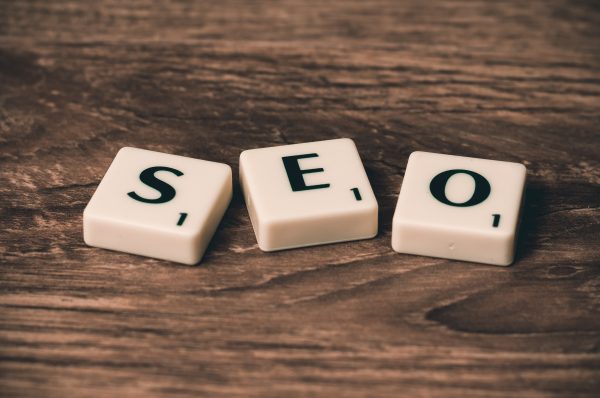Get ready to level up your life.
Here, at the LaLa Guru Show, we explore thought-provoking and fascinating information regarding matters of the body, the mind, business and beyond.
We’ll dive deep into energy healing, quantum physics, the law of attraction, the power of the subconscious mind, longevity medicine, boosting your immune system, and so much more. Plus, for those of you who have a desire to grow your own business, we’ll be exploring cutting-edge strategies on how to best amplify your brand or messaging platform.
Today, we’re sitting down with Sam Morris, who, starting with a background in psychology and statistics, has over a decade of experience in search engine optimization, UX, and human web behavior analysis. He has worked as an expert in search engine optimization and search engine marketing across the United States and internationally. He is also head of digital marketing for my company, LaLaPow.
Due to his diverse clientele, Sam has acquired unique insights into the science behind user behavior and what end-users are saying with their clicks. He also happens to be one of the most brilliant people I know.

The Science of Behavior
Let me ask you a question: when you open your phone, your tablet, or your computer and begin surfing the web, what makes you do what you do? Why do you like certain websites better than others? What makes you buy certain products or like the things that you do?
When it comes to the web, you’re not as in control as you might think. The science of behavior and the web user experience is a highly sophisticated game. Sam agrees that the psychology of the web, “behavioral analysis and the psychology behind websites, and everybody’s interactions with these things on a daily basis, is an incredible topic to explore,” and we’ll start with Search Engine Optimization (SEO).
“Search engine optimization, for people who don’t know, it’s the field of making changes to websites so that they rank better on search engines.”
One of the most well-known search engines is Google, but there are also others such as Bing, DuckDuckGo, Yahoo, and AOL, to name a few. These “optimizations” aren’t random, they’re highly targeted, using a methodology derived from “tons of studies in this industry [done] over the last 20 years or so…it’s really evolved.” Behavior analysis is a big part of SEO, which considers how users interact with websites and what they do on search engine results pages. Let’s take Google, for example.
“Google uses tools like Google Analytics, which evolved from Urchin tracking metrics when Google acquired those companies in 2004 and 2005. And then, they acquired DoubleClick Advertising, which uses cookies to track users’ behavior. All these things are tools that SEOs use to be able to determine which behavioral factors are impacting rankings the most.”

Sam’s background in psychology and statistics, along with his fascination with search engines, led him to explore his own behaviors on the web and how the way he “looks for information can greatly impact the results…and the knowledge that [he] can acquire.” Spurred by his curiosity, he wanted to know how those search engines run, learn more about consumer behavior, and understand “the facets of what makes people do the things that they do, what makes them make the decisions they do. All the way from a philosophical standpoint to a behavioral standpoint.”
When the web first opened up, we were diving in and exploring, surfing the web, and didn’t care very much about what was happening behind the scenes, but now, it’s so sophisticated. There are so many choices, and the quality of our user experience online has gotten to a point where we’re trained to like or dislike certain things due to heavy exposure. Simultaneously, we are training the search engines to display those things because our behavior has informed them to.
Google Analytics is a prime example of this as it’s on most websites, and “it allows the administrators of the website to be able to monitor the behavior of people on the website.” It will show when somebody visits a website and where they came from—in terms of other websites, search engines, an advertisement, or social media.
“I can see how they’re interacting, what page they landed on, where they went, if they added items to their shopping cart, if they purchased these items, or if they just left.”
With Google Analytics, you can assess whether a customer is taking too long to make a purchase or find the information they’re searching for. “These tools are extremely valuable, and they really revolutionized the way that people build websites because they started listening to the users who landed on their site.”
User Experience
Most of us have had online shopping experiences, and in the beginning, our experience going online was limited, but “user experience (UX) encompasses a lot of different things.”
“User experience is, at the highest level, your experience when you’re interacting with a website or, really, any piece of software. It’s when you click through items, how you navigate them, how you find the information you’re looking for, how you accomplish the tasks that you set out to do when you get onto that website.”
When we, as consumers, buy things online, we develop expectations, “things like one-click purchases, which was a patent that Amazon got 20-something years ago in the late ‘90s…allowed them to revolutionize their product in the marketplace and allowed them to be able to set an expectation for people that that’s the way that their shopping experience should be, it should be that easy, one click.” It was a brilliant concept, and now, when we analyze the behavior, more clicks equals drop-offs.
“You can see when somebody buys and when they enter the website; you can watch people filing off every step of the way if they have too many steps.”
Everything on a website contributes to the user experience, even something as simple as a video. If that video takes too long to load or play—and it’s something that’s supposed to motivate a visitor to purchase or sign up for something—they may get impatient and leave.

“For things loading too long, you would see things like bounce rate, which means a user leaves within 30 seconds. So, a really high bounce rate is typically indicative of a long load time.”
One way to improve user experience is by testing it using A/B testing or using programs like Hotjar or Microsoft’s Clarity, which have lots of features, including recording user sessions and generating heat maps. Heat maps show you where the most clicks and scrolls are, whether they scroll to the bottom of the page or engage (or ignore) a Call To Action (CTA) button. These analytic tools watch behavior and how people are responding when they’re visiting a web page. “This allows the people who are running these websites [to] provide a better experience for the end-user.”
User Interface
User Interface (UI) varies from UX in that UI refers to “actual, visual elements, typically, on websites.”
“Visual elements are extremely important because there’s been tons of research, even dating back half a century, where people are looking at things like color theory…looking at how do colors drive people’s decisions to do certain things.”
When it comes to color, studies have shown the most liked color to be blue across gender and age demographics, while brown is the least liked color. Color plays an important role in web-building, especially with consideration to culture sensitivity, CTAs, and branding. Having gleaned information through his international clientele, Sam says that “in some Asian countries, red is considered a very harsh color” to use in communication, “whereas, in other places, red might be a color that symbolizes passion.”
Consider the brand Coca-Cola and its trademark red and white color scheme. What would Coke be like if it was chartreuse and white? It wouldn’t be the same thing, and perhaps, would not hold the same power or brand recognition. When we think about what Coca-Cola sells, most people might say they sell cola. Sam says, “no, they sell Coke, they sell Coca-Cola–the brand. The brand, I want to feel that way.” He goes on to say that “Nike doesn’t sell sneakers, they sell Nikes.”
“The brand becomes more powerful than the sum of all the products underneath the brand. These kinds of things are brand consistency and brand message…it ties into the UI thing, too, where people are looking at: do we have a consistent brand across the entire site. It’s a design element, but it also influences people’s behavior.”
One design element that influences people’s behavior are buttons. That’s right, the shape and color of your CTA button has influence over your consumer. Studies have shown that “red buttons perform better than green buttons on websites; so they have a higher conversion rate…and that’s been demonstrated across tons of different studies, different industries, different countries, even when red is not a popular color for these things, it just has a higher conversion rate,” Sam says.

Site speed is another important factor when considering user interface and user experience. “If your site takes three seconds to load, you’re losing over half of your visitors.” Three seconds. That’s not a long time, but the cost is great, with studies showing a bounce rate of 53 percent. Previously, Sam worked on one website with around one million visitors per month, but because their site took nine seconds to load, they lost 90 percent of their visitors. For perspective, “a typical desktop site actually takes 10.3 seconds to load, and a typical mobile site takes 22 seconds to load.” Most people find that “intolerably slow and leave.” According to the data, most people will leave the site.
The only exception to this rule seems to be government websites. Despite a lack of user-friendly interfaces, poor user experiences, and long load times, people are more willing to endure these negatives to accomplish their end-goal because the importance of that task is typically great.
Google’s PageSpeed Insights is a tool that can measure how fast your site loads, both on mobile and desktop. This speed is also how Google views your site and “is directly related to your ranking.”
“Google’s product is high-quality, relevant results, and they control 70 percent of the search market, so it could not be overstated how important it is to rank on Google and be at the top and provide relevant, high-quality information for people who are looking for either goods or services or whatever you’re providing on your website.”
Google also indexes videos in the search engine results, and they have statistics linked to them, which contributes to a website’s ranking. “A page with a video is 53 times more likely to rank number one in the search engine results page.”
So, when it comes to user experience, user interface, and visuals, there are plenty of tools available to refine your site, increase your ranking, and enhance user experience for website visitors. Employ AB testing, which measures a user’s interaction (clicks) against two separate design (UI) elements, to find which garners the most interaction from your visitors. Lastly, since “Google is King,” take advantage of their free programs to improve your site and put it front and center on Google’s radar.



